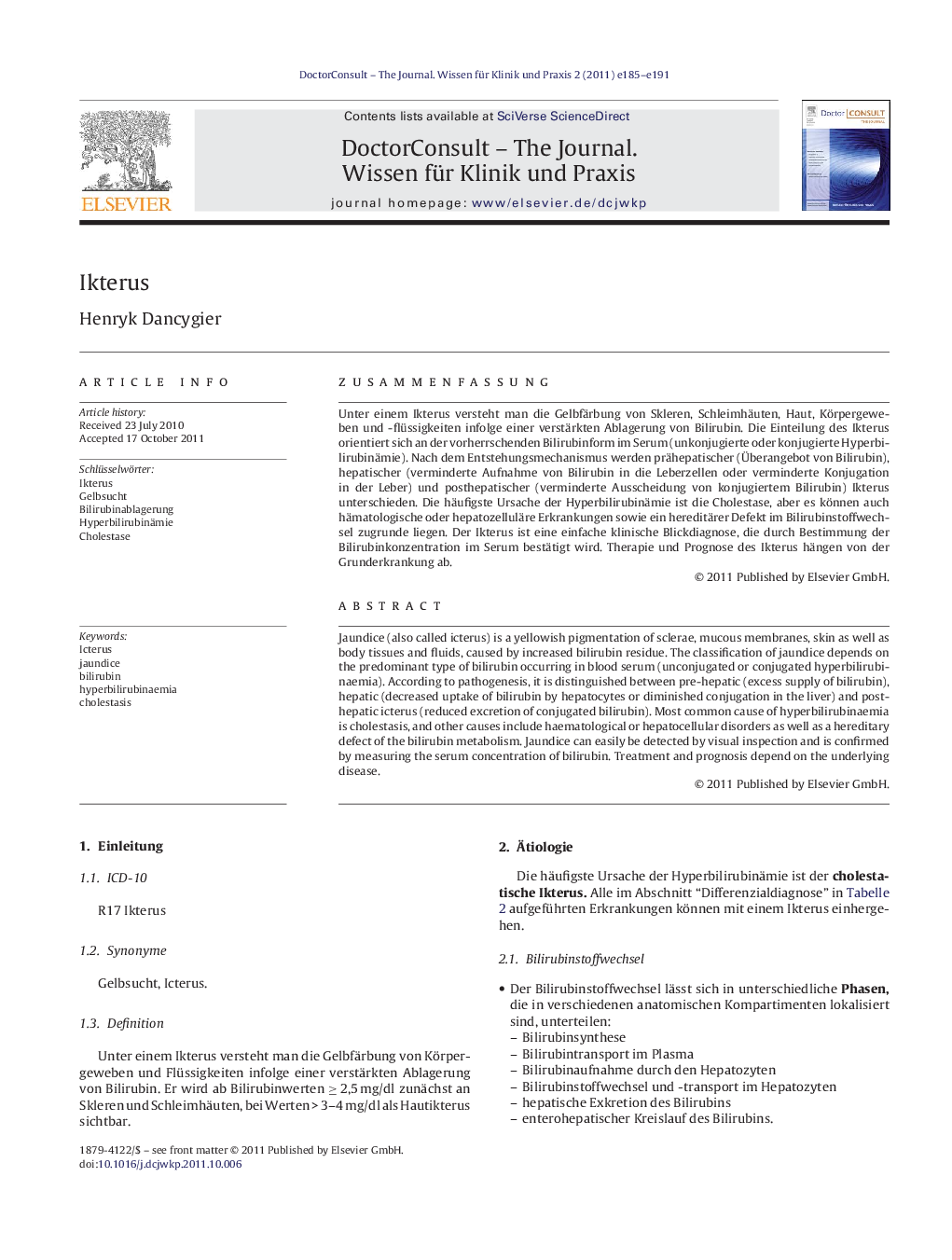| Article ID | Journal | Published Year | Pages | File Type |
|---|---|---|---|---|
| 3464871 | DoctorConsult - The Journal. Wissen für Klinik und Praxis | 2011 | 7 Pages |
Abstract
Jaundice (also called icterus) is a yellowish pigmentation of sclerae, mucous membranes, skin as well as body tissues and fluids, caused by increased bilirubin residue. The classification of jaundice depends on the predominant type of bilirubin occurring in blood serum (unconjugated or conjugated hyperbilirubinaemia). According to pathogenesis, it is distinguished between pre-hepatic (excess supply of bilirubin), hepatic (decreased uptake of bilirubin by hepatocytes or diminished conjugation in the liver) and post-hepatic icterus (reduced excretion of conjugated bilirubin). Most common cause of hyperbilirubinaemia is cholestasis, and other causes include haematological or hepatocellular disorders as well as a hereditary defect of the bilirubin metabolism. Jaundice can easily be detected by visual inspection and is confirmed by measuring the serum concentration of bilirubin. Treatment and prognosis depend on the underlying disease.
Related Topics
Health Sciences
Medicine and Dentistry
Medicine and Dentistry (General)
Authors
Henryk Dancygier,
